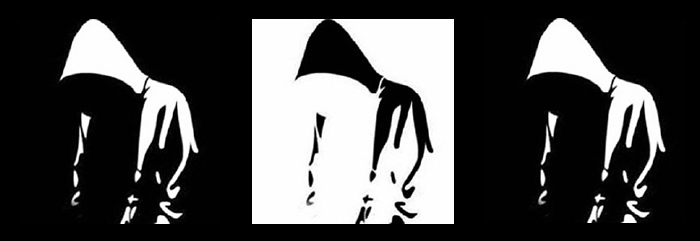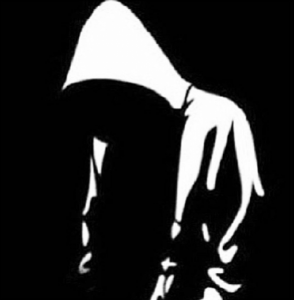
The perfect crime: Kill a black man
For those who—like the five justices of the Supreme Court who voted to gut the 1965 Voting Rights Act because they claim that in America racial discrimination is largely a thing of the past—I just want to say this:
Trayvon Martin.
Yes, racial justice has improved since the gruesome days of lynching, the glory days of the Ku Klux Klan, and the century-long reign (1860s-1960s) of the American South’s version of apartheid, better known as Jim Crow. Hooray, there is even a black man in the White House!
 Imagine that. But don’t be fooled. Many things haven’t changed. One of those, the cruelest living legacy of this country’s ugly racial history, is that, in a disturbing proportion of cases, a white person can kill a black, especially a male, and get away with it.
Imagine that. But don’t be fooled. Many things haven’t changed. One of those, the cruelest living legacy of this country’s ugly racial history, is that, in a disturbing proportion of cases, a white person can kill a black, especially a male, and get away with it.
If you think those days are over, you probably thought that the case against George Zimmerman in the killing of Trayvon Martin would be an easy win for the prosecution. Zimmerman’s role, as a “neighborhood watch captain,” was to keep his eyes open and report suspicious activity to the police. Instead, Zimmerman assumed the persona of a gun-toting vigilante, ready to pursue, harass, confront, and ultimately kill a young black man he thought looked or acted “suspicious.”
For Zimmerman, Martin fit that description simply because he was wearing the standard attire of a young, urban, African American male (a “hoodie”) and because he was looking around. Wouldn’t you look around if someone kept following you in a car?
Zimmerman did not see Martin, who had simply gone out to buy a snack, either committing a crime or getting ready to do so. Yet he kept following him. And when the police dispatcher who had been communicating with Zimmerman throughout the chase told him directly, “We need you to stop following him,” his words went unheeded. Zimmerman continued after Martin. At some point, Trayvon Martin apparently got tired of being hounded by Zimmerman. Here was a man relentlessly on his tail for no legitimate reason, a civilian with no police cruiser or badge, a person unknown to Martin who at this point was acting on his own against the order of the police he was supposedly assisting.
No one except George Zimmerman knows exactly what happened in the ensuing deadly confrontation. But we do know this. George Zimmerman was a presumably mature adult who should have exercised restraint and followed police instructions. Trayvon Martin was a kid bewildered as to why he was being tracked like prey. George Zimmerman had a gun. He had a car. Martin had neither. Under these conditions, how in the world could Trayvon Martin threaten Zimmerman’s life to the point that it justified killing the teenager? Why couldn’t have Zimmerman stayed safely in his locked car, his gun ready in the unlikely case the Martin managed to break in, and call the police who are trained and paid to handle just these situations? Well, he couldn’t very well do that because the cops had already told him to BACK OFF!
Zimmerman claims he pursued Martin that evening because he sensed the young man was looking for trouble. But the facts indicate that Zimmerman was the one who was looking for trouble. He was the pursuer. His stated reasons for chasing Martin are lame at best, racist at worst. He wouldn’t listen to those who have the authority and training when they told him to stand down. He had the gun. He got out of his vehicle thereby making Martin reasonably afraid for his life and physical integrity. He was the killer. He suffered almost no injuries.
The Florida “stand your ground” law has been blamed for the nearly all-white jury’s acquittal of Zimmerman. No doubt, it is an awful law and it may have influenced the jury. But if anyone was cornered and forced to stand his ground in this case, it was Trayvon Martin. And, if anyone was continuously intruding into the other’s space, it was George Zimmerman.
The case of Trayvon Martin is only the latest in a long series of facts that show that the United States is far from the color-blind society in which, according to the Supreme Court, the Voting Rights Act is virtually an anachronism. To cite just one example, in the last thirty years a massive number of black men have been incarcerated, a phenomenon one scholar has called the “New Jim Crow.” Specifically regarding the issue of voting rights, as soon as the Supreme Court eviscerated the Voting Rights Act several Southern states rushed to enact myriad laws all calculated to suppress the minority vote.
The acquittal of George Zimmerman was such a blatant miscarriage of justice that it not only elicited protests in more than a hundred U.S. cities, it also produced a minor miracle. President Barack Obama, a politician supremely allergic to the politics of racial identity, for once spoke specifically as a black man and said what many in the African American community have been thinking: “That could have been me…” [or my son].
As long as so many white people, from jurors in Florida to Supreme Court Justices in Washington, believe (or pretend to believe) that racism is history, the “conversation” about race that Barack Obama on down want the country to have will be as elusive as racial justice itself.


